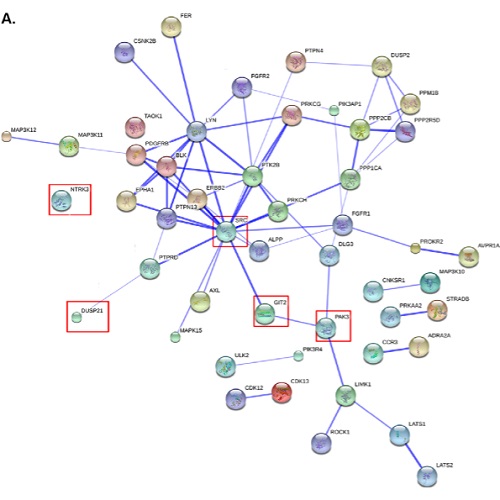A high-throughput siRNA screen identifies genes that regulate mannose 6-phosphate receptor trafficking.
The delivery of newly synthesized soluble lysosomal hydrolases to the endosomal system is essential for lysosome function and cell homeostasis. This process relies on the proper trafficking of the mannose 6-phosphate receptors (MPRs) between the trans-Golgi network (TGN), endosomes and the plasma membrane. Many transmembrane proteins regulating diverse biological processes ranging from virus production to the development of multicellular organisms also use these pathways. To explore how cell signaling modulates MPR trafficking, we used high-throughput RNA interference (RNAi) to target the human kinome and phosphatome. Using high-content image analysis, we identified 127 kinases and phosphatases belonging to different signaling networks that regulate MPR trafficking and/or the dynamic states of the subcellular compartments encountered by the MPRs. Our analysis maps the MPR trafficking pathways based on enzymes regulating phosphatidylinositol phosphate metabolism. Furthermore, it reveals how cell signaling controls the biogenesis of post-Golgi tubular carriers destined to enter the endosomal system through a SRC-dependent pathway regulating ARF1 and RAC1 signaling and myosin II activity.

- J. Cell. Sci. 2014 Dec 1;127(Pt 23):5079-92
- 2014
- Cell Biology
- 25278553
- PubMed
Enabled by:
